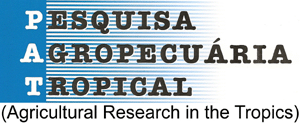ABSTRACT
Seed color, brightness and texture are important aspects for the consumption of immature beans. This study aimed to estimate the phenotypic variability among thirty cowpea genotypes for immature seed harvesting, in order to guide breeding programs. The experiment was carried out in a randomized blocks design, with three replications. The evaluated traits were immature seeds yield, pods and dry seeds production, number of immature pods, 100-immature seeds weight, immature pods length, number of seeds per immature pod, cooking time, harvesting period of immature pods, seed color, pod color, plant growth habit, opening of immature pods, seed threshing from immature pods, cultivation value and seed browning after threshing. Anova and three clustering methods were applied: UPGMA using the Jaccard coefficient of similarity; modified Tocher method based on the Gower algorithm; and k-means. All the analyses were performed based on the variable means of experiments evaluated in six environments. A statistically significant phenotypic variability was observed among all the quantitative traits. Discrepancies occurred in the accessions grouping and number of clusters. The accession BRS Acauã, in one group, and P508 and PCCR3F6L15, in other groups, showed a good quality for immature grain harvesting, were consistently grouped into different clusters and are recommended for use as parents in the development of new cultivars.
KEYWORDS:
Vigna unguiculata
; cluster analysis; genetic variability

 Thumbnail
Thumbnail
